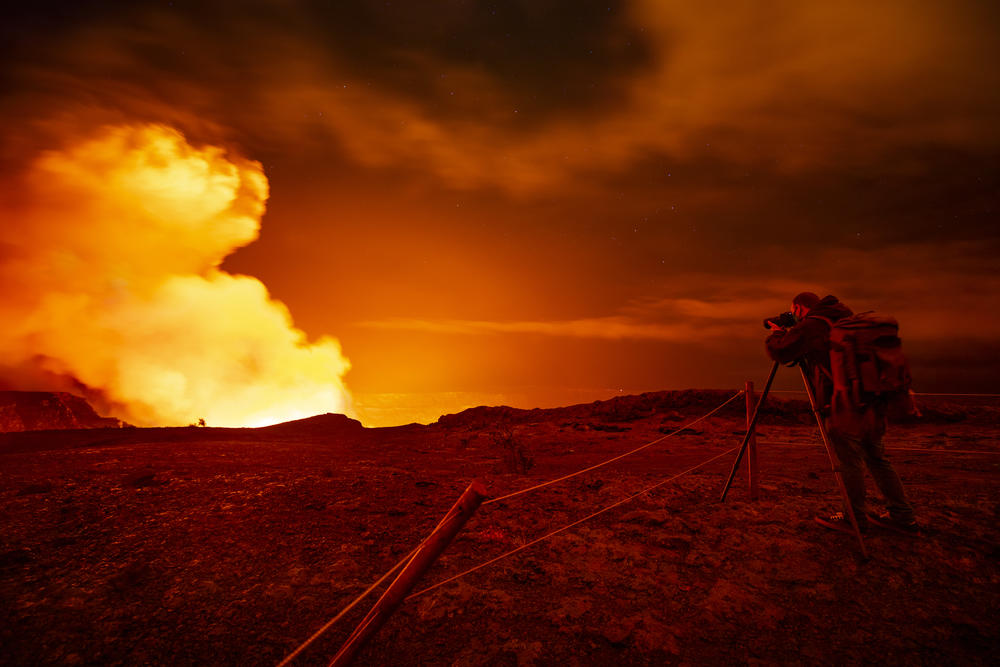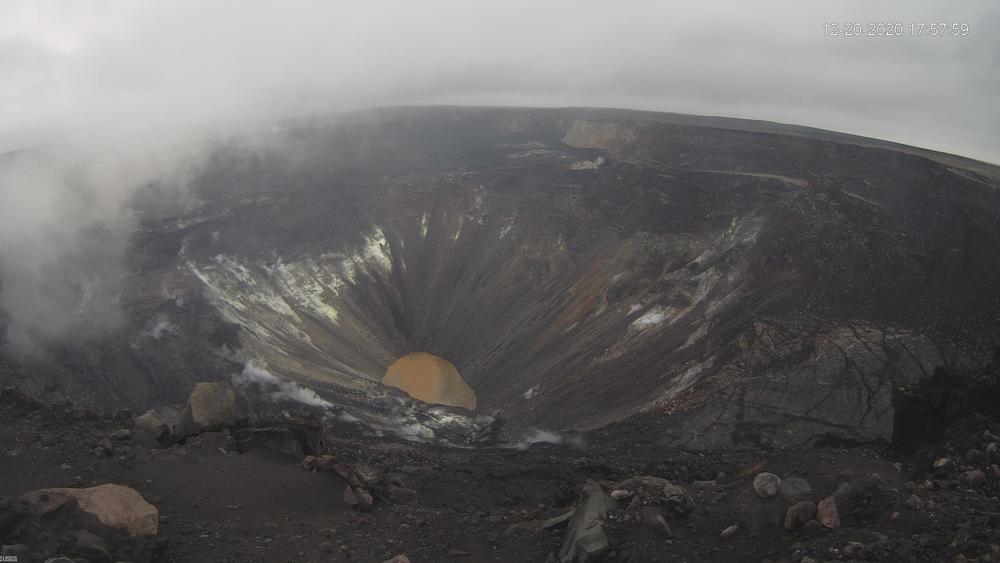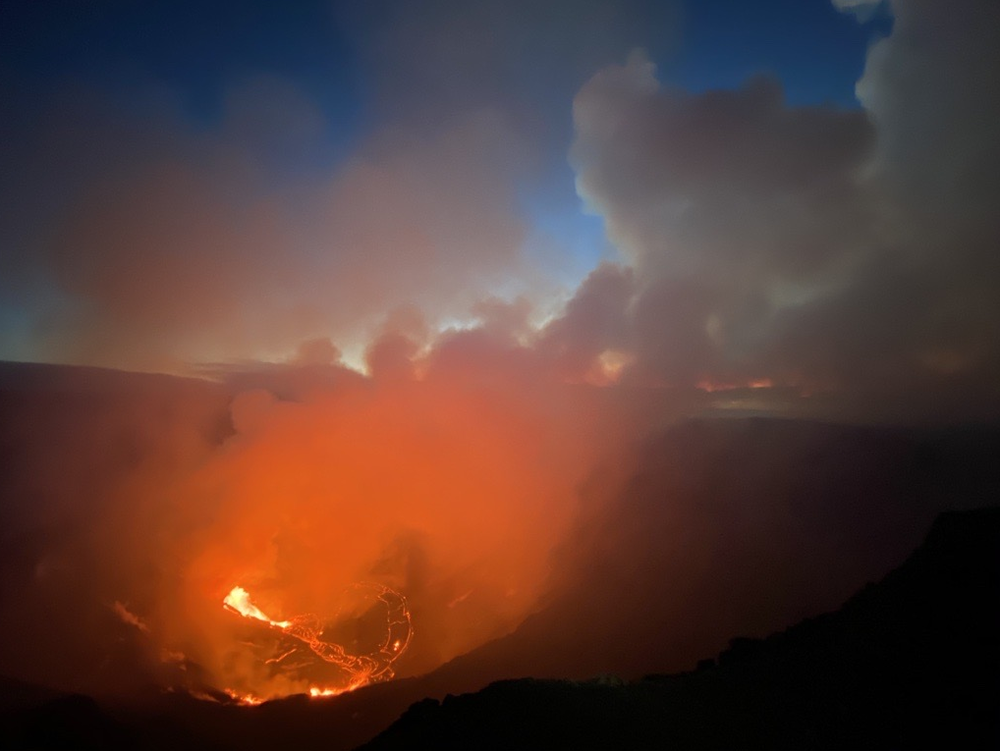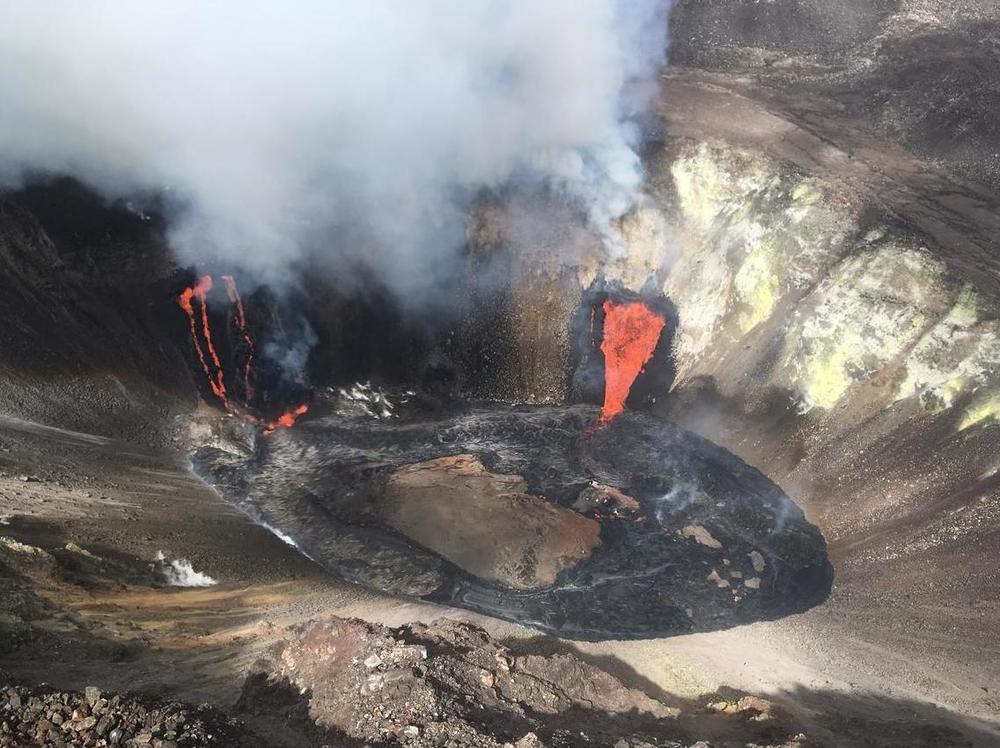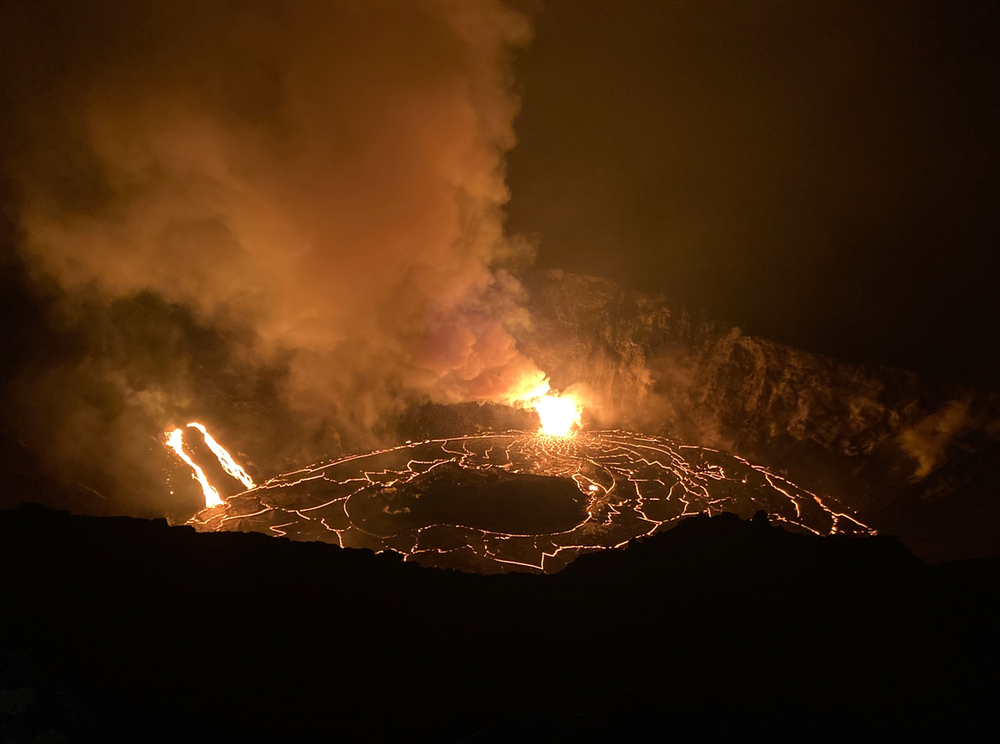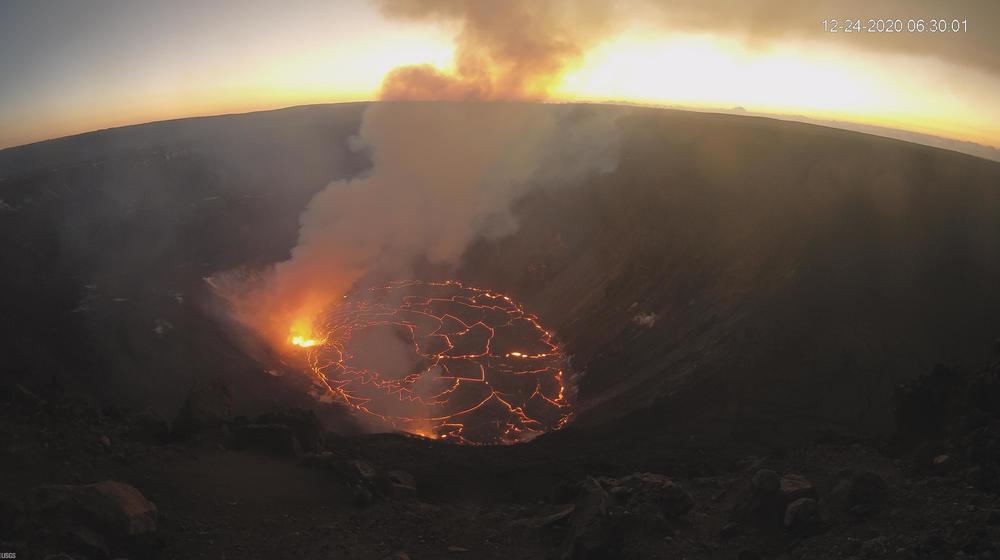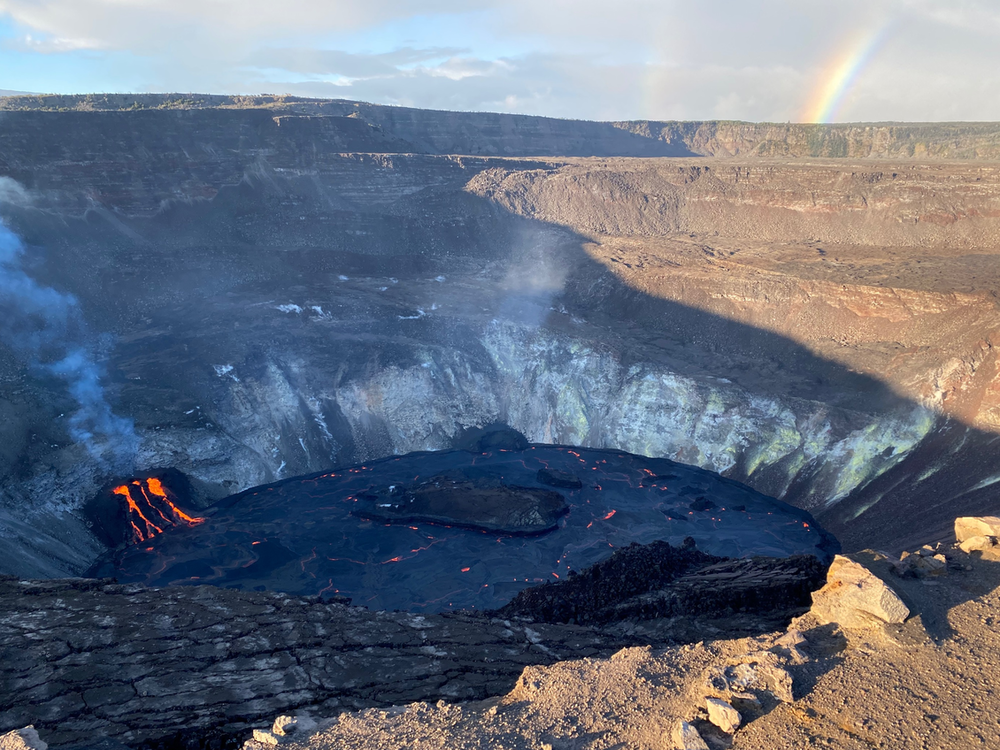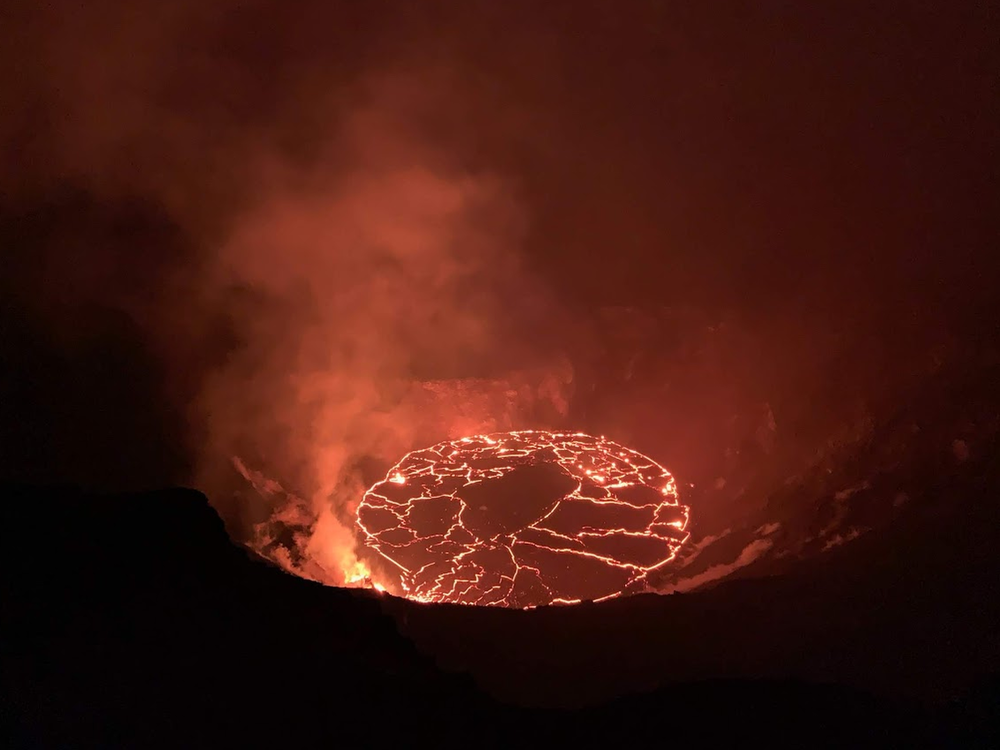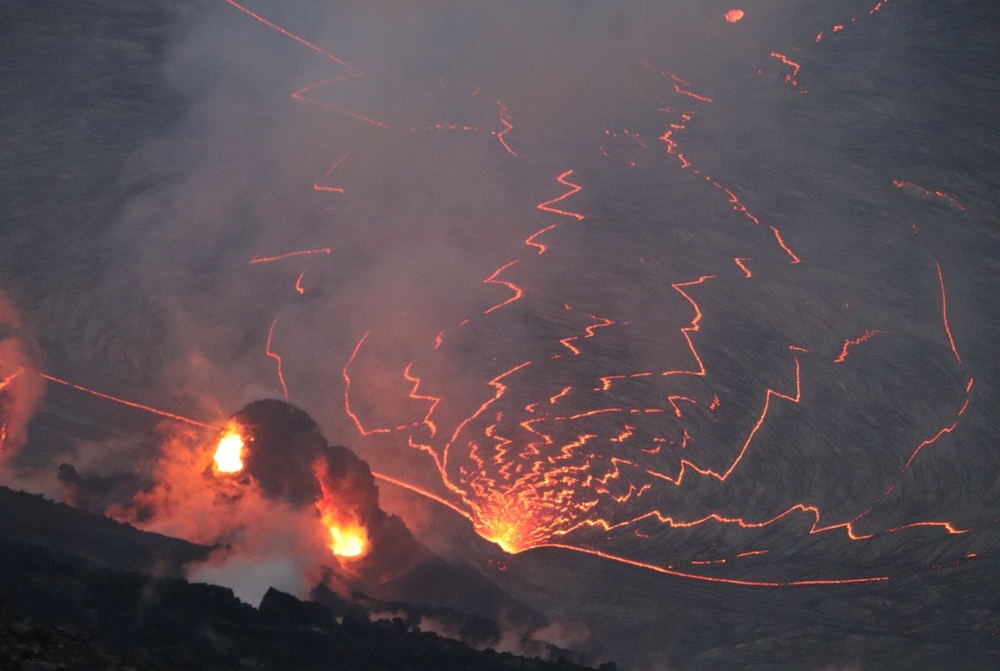Section Branding
Header Content
Hawaii's Kilauea Volcano Eruption Creates 600-Foot-Deep Lava Lake
Primary Content
On Hawaii's Big Island, Kilauea volcano erupted Dec. 20 for the first time in more than two years.
Lava spewed from a fissure in the northwest wall of Halemaʻumaʻu crater and cascaded into the deepest part of the crater, boiling away a water lake. There's now a growing lava lake, nearly 600 feet deep.
The U.S. Geological Survey has been documenting the eruption. Here, in photos and video, is how Kilauea's newest eruption is continuing — and changing the landscape.
Copyright 2020 NPR. To see more, visit https://www.npr.org.
